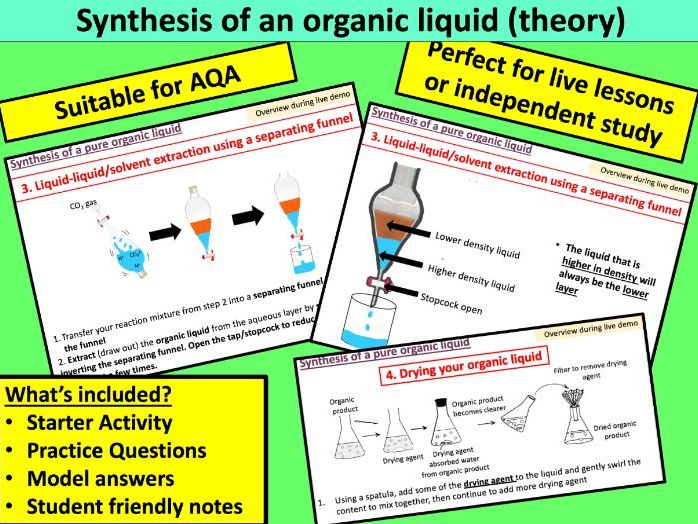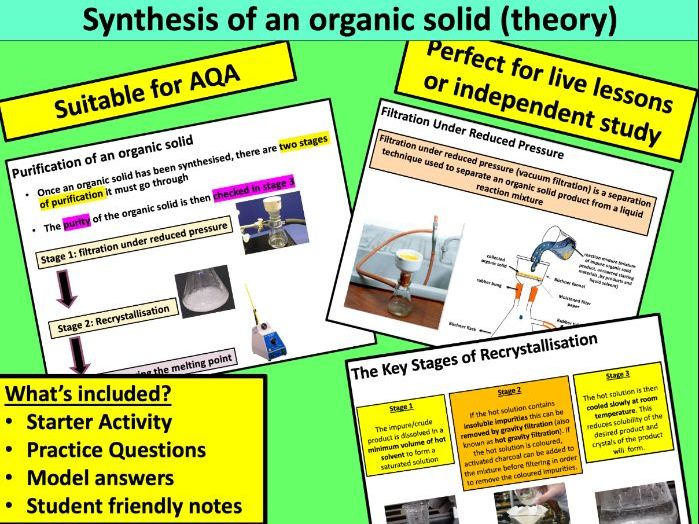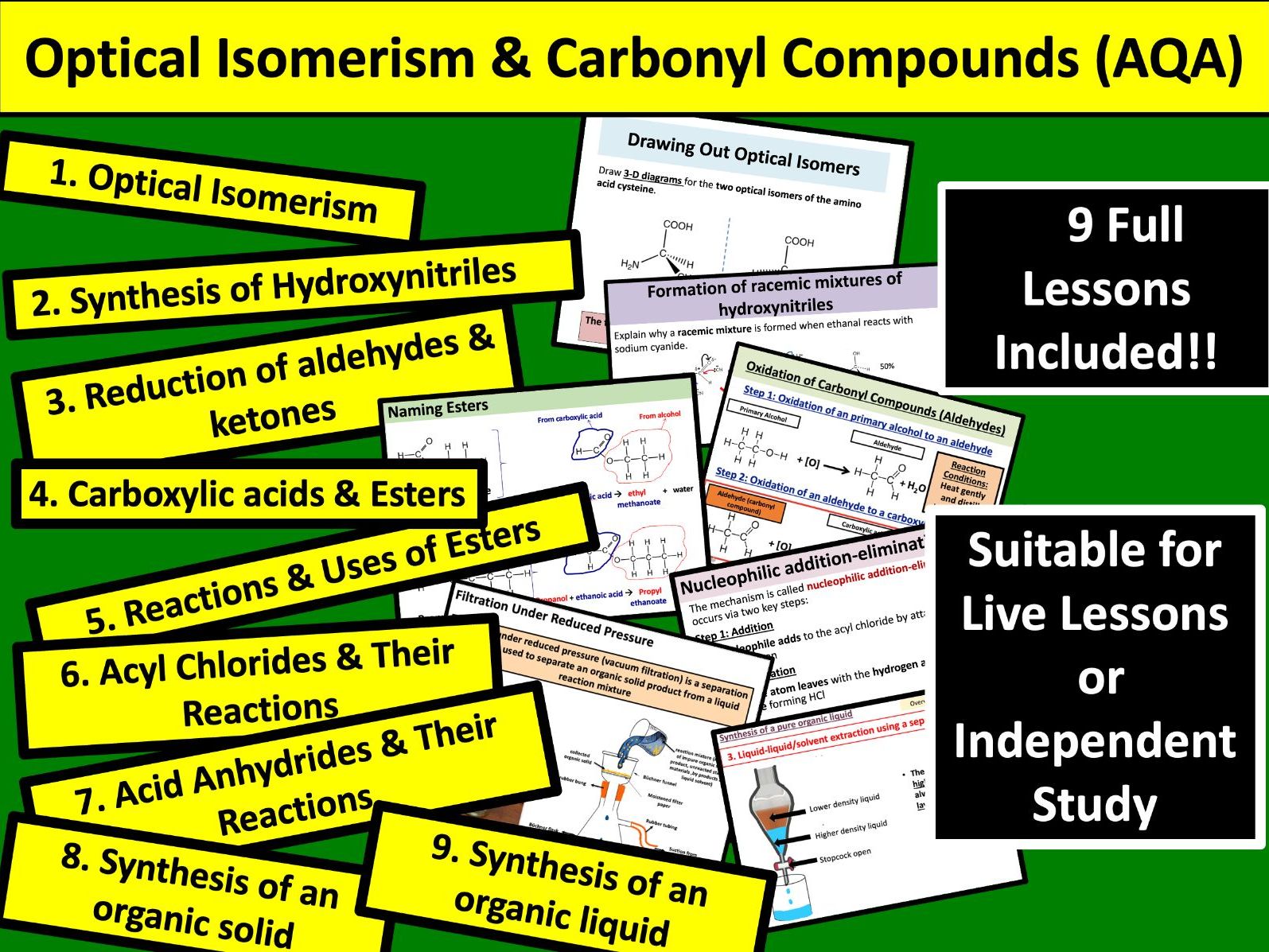Resources included (9)

Synthesis of an Organic Liquid (AQA)

Synthesis of an Organic Solid (AQA)

Acid Anhydrides and Their Reactions (AQA)

Acyl Chlorides and Their Reactions (AQA)

Reactions and Uses of Esters (AQA)

Carboxylic Acids and Esters (AQA)

Reduction of Aldehydes and Ketones (AQA)

Synthesis of Hydroxynitriles (AQA)

Optical Isomerism (AQA)
9 Full Lesson Bundle on Optical Isomerism and Carbonyl Compounds. Suitable for the AQA Specification
Lesson 1: Optical Isomerism
- To know which types of molecules show optical isomerism
- To be able to represent enantiomers as 3D molecules showing the chiral centres
- To understand why racemic mixtures are optically inactive
Lesson 2: Synthesis of Hydroxynitriles
- To know how to name hydroxynitriles
- To understand the steps of the nucleophilic addition reaction mechanism to form hydroxynitriles
- To be able to explain how a racemic mixture of hydroxynitriles can be produced
Lesson 3: Reduction of Aldehydes and Ketones
- To review the oxidation of alcohols using Cr2O72-/H+ to form aldehydes, ketones and carboxylic acids
- To understand nucleophilic addition reactions of aldehydes and ketones with NaBH4 to form alcohols
- To construct the mechanism for nucleophilic addition reactions of aldehydes and ketones with NaBH4
Lesson 4: Carboxylic Acids and Esters
- To know how to draw and name carboxylic acids (Y12 recap)
- To construct equations for the reaction of carboxylic acids with carbonates based on their weak acidic properties
- To know how to name and draw esters
- To know how esters are formed from the reaction of carboxylic acids with alcohols
Lesson 5: Reactions and Uses of Esters
- To describe some common uses of esters
- To construct equations for the hydrolysis of esters in acidic or alkaline conditions
- To describe how soap and biodiesel are made and can write equations for these reactions for specified animal fats/ vegetable oils
Lesson 6: Acyl Chlorides and Their Reactions
- To know how to draw and name acyl chlorides
- To identify the products of and write equations for acylation reactions of water, alcohols, ammonia and amines with acyl chlorides
- To outline the mechanism of nucleophilic addition-elimination reactions of acyl chlorides water, alcohols, ammonia and primary amines
Lesson 7: Acid Anhydrides and Their Reactions
- To know how to draw and name acid anhydrides
- To identify the products of and write equations for acylation reactions of water, alcohols, ammonia and amines with acid anhydrides
- To outline the mechanism of nucleophilic addition-elimination reactions of acid anhydrides with water, alcohols, ammonia and primary amines
- To state the advantages of using ethanoic anhydride rather than ethanoyl chloride in the production of aspirin
Lesson 8: Synthesis of an Organic Solid (theory)
- To outline the key synthesis steps involved in making a pure organic solid
- To illustrate using a labelled diagram the process of filtration under reduced pressure
- To explain why certain synthesis steps are carried out when making a pure organic solid
Lesson 9: Synthesis of an Organic Liquid (theory)
- To outline the key synthesis steps involved in making a pure organic liquid
- To illustrate using a labelled diagram the process of liquid-liquid extraction
- To explain why certain synthesis steps are carried out when making a pure organic liquid
Something went wrong, please try again later.
This resource hasn't been reviewed yet
To ensure quality for our reviews, only customers who have purchased this resource can review it
to let us know if it violates our terms and conditions.
Our customer service team will review your report and will be in touch.
